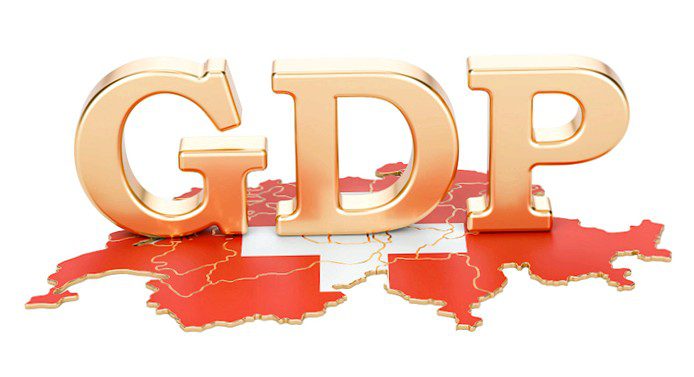
As history shows, economic downturns are usually over by the time they are recognized. From a portfolio perspective, according to Peter Bezak of Zurich Invest AG, bonds have generated positive returns in past recessions. Another insight: even when interest rates are low, bonds can stabilize your portfolio.
It is the most reliable leading indicator of economic activity in the U.S. and is even considered a gauge for the entire global economy: the Purchasing Managers Index (PMI), also known as the ISM Purchasing Managers Index. The PMI is published by the Institute for Supply Management (ISM) and is a weighted index consisting of the sub-indices new orders, production, employment, shipments received, and inventories. A value above 50 points signals rising industrial production and a value below 50 points signals declining industrial production. During the past recessions, this value has always fallen to around 40 points or even lower.
US ISM Purchasing Managers Index
Generally, an economy is said to be in recession when it experiences two consecutive quarters of negative gross domestic product (GDP) growth figures. According to this definition, the economic history of Switzerland over the last 35 years reveals a surprising number of recessions, nine to be exact. "It is notable that each of the last seven recessions in Switzerland lasted only two quarters. In view of the dynamics in the financial market crisis in 2008, this is particularly remarkable. However, the further back in history we look, the longer the recessions lasted", explains Peter Bezak, investment expert at Zurich Invest AG.
Clear majority for positive growth
The longest recession in Switzerland in the past 35 years was that of the early 1990s, when growth was negative for four consecutive quarters. But in most cases, recessions are relatively short episodes of economic weakness, even in Switzerland. In the past 35 years, with 140 quarters correspondingly, GDP only developed negatively in 21 quarters, or about one-seventh of the time. About six out of seven quarters had positive growth rates.
Bezak goes on to explain how various asset classes, such as stocks and bonds, as well as a diversified portfolio, performed from the perspective of a Swiss investor during and after the most recent deep recessions of the past 35 years.
Bonds provide stability during periods of recession
The following chart compares the annualized returns from the perspective of a Swiss investor, which various asset classes and a balanced portfolio generated during the last three deepest recessions. It can be seen that during the respective periods, government bonds and also corporate bonds generated positive returns, while equities, as measured by the global equity market index MSCI World, generated weakly positive to significantly negative returns.
Returns during recessions
Twelve months after the end of a recession, it is clear that in all three recessions, stocks in particular have recovered unmistakably (cf. following chart). What does it mean for the investor? "If the investor remains invested in a diversified portfolio of stocks, bonds, real estate and alternative investments, he can benefit from the stability of bonds during periods of recession and from the usually expected market recovery of stocks afterwards", says Bezak.
Yields after periods of recession
Risks of a rise in interest rates
As the investment expert continues, bonds are considered a relatively safe form of investment during a recession. "But they are also subject to various risks and one significant risk is the change in interest rates. In the current low interest rate environment, these risks are asymmetrically distributed. While interest rates are unlikely to fall much further, leaving bonds with little upside potential, the value of bonds would fall significantly if interest rates rose sharply. Even corporate bonds are not immune to a rise in interest rates, but the risk premiums over safe government bonds provide some "buffer" in the event of a rate rise, says Bezak.
Improving the risk-return profile
While it is almost impossible to earn a reasonable minimum return in a portfolio today with bonds alone due to the low interest rate environment. Still, from a correlation perspective, both corporate bonds and government bonds were suitable for improving the risk-return profile of a mixed portfolio. A fair amount of bonds can protect a portfolio during a recession, even when interest rates are low, he said. Neither government bonds nor corporate bonds have had negative returns in the three recessions considered in the past. "In other words, corporate bonds reduce a portfolio's volatility, but not its return", Bezak points out. Based on the current low interest rate level and the low interest rates expected to remain low, corporate bonds are therefore preferable to government bonds, she says.